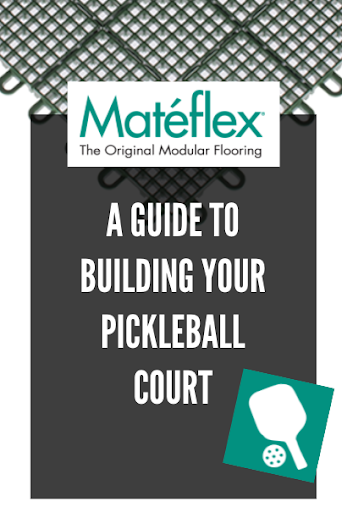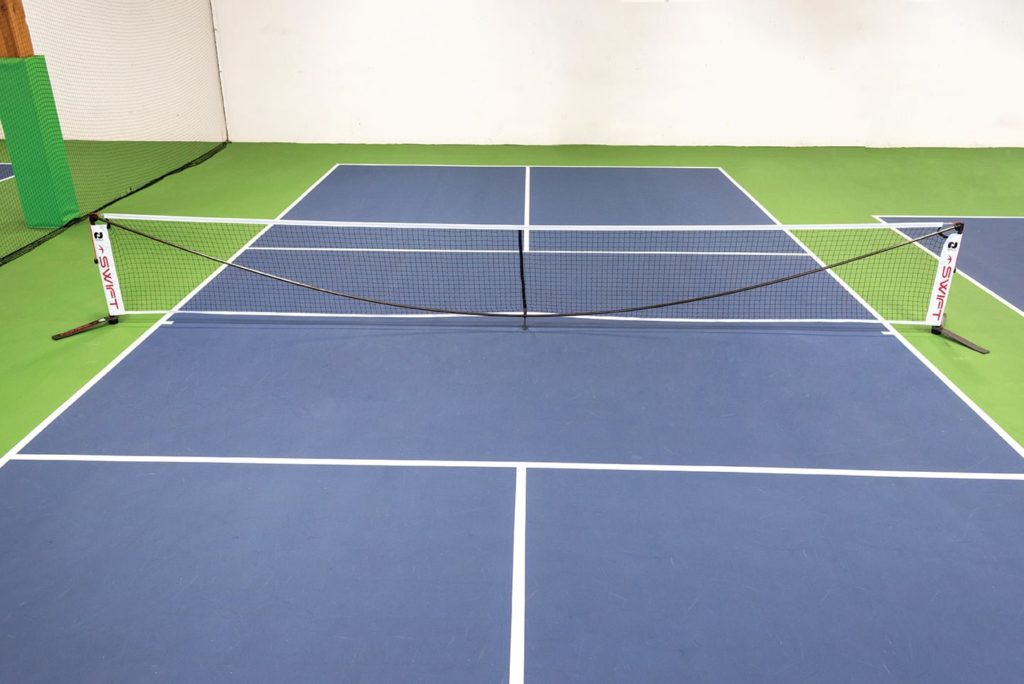Pickleball Court Construction-- Necessary Tips for a Resilient Court
Pickleball Court Construction-- Necessary Tips for a Resilient Court
Blog Article
Sustainable Practices in Pickleball Court Building You Should Know
As the appeal of pickleball continues to climb, so as well does the requirement for sustainable techniques in court building. The effect of these methods prolongs far past the court itself.
Choosing Eco-Friendly Products
Choosing green materials is a critical action in the building and construction of lasting pickleball courts. The selection of lasting products not only lessens environmental effect but likewise improves the longevity and efficiency of the court. Key products include reused rubber for the surface, which supplies exceptional toughness and shock absorption while diverting waste from land fills.
Additionally, using in your area sourced products reduces transportation exhausts and sustains local economic climates. Pickleball court construction. Making use of indigenous woods for fencing and seats can give a lasting visual while ensuring resilience against the components.
Integrating absorptive products for court foundations can further add to sustainability by permitting all-natural water drain and decreasing overflow. These selections not just safeguard regional environments yet likewise promote much healthier play environments.
Reliable Drainage Solutions
While the option of green materials is necessary, implementing effective water drainage services is equally critical for maintaining sustainable pickleball courts. Appropriate drain not only shields the court surface area from water damages but additionally lessens erosion and overflow, advertising environmental stability.
Effective water drainage systems can include permeable paving, which allows water to penetrate the ground instead of pooling externally. This lowers the chance of standing water, which can bring about mold and mildew and various other upkeep concerns. In addition, incorporating purposefully placed drain networks and swales can direct excess water away from the court location, guaranteeing a dry having fun surface area and stopping dirt erosion.
Using native greenery in the landscaping around the courts can further enhance drain by absorbing excess water and lowering runoff. These plants call for much less irrigation and promote biodiversity, lining up with sustainable methods.
Moreover, it is crucial to frequently maintain the drain system to ensure its long-lasting performance. This includes clearing up particles and tracking for clogs. By focusing on effective water drainage remedies, pickleball court producers can dramatically add to the sustainability and durability of the center, eventually benefiting both players and the atmosphere.
Energy-Efficient Lights Options
As the demand for pickleball proceeds to grow, integrating energy-efficient illumination options into court layout has come to be increasingly essential for sustainability. Typical illumination systems often eat excessive energy, adding to greater functional expenses and environmental impact. Embracing contemporary, energy-efficient innovations is crucial for both brand-new constructions and remodellings.
LED (Light Emitting Diode) illumination stands apart as a premier selection because of its durability and power savings (Pickleball court construction). Compared to conventional illumination, LEDs utilize roughly 75% less power and can last as much as 25 times longer, substantially decreasing upkeep expenses. Moreover, the directional nature of LED illumination lessens light pollution, guaranteeing that lighting is concentrated on the court as opposed to surrounding areas.

Sustainable Surface Area Alternatives
Discovering lasting surface options for pickleball courts has actually gained traction amongst builders and players alike. The focus on environmentally friendly products not just straightens with the expanding ecological recognition but additionally boosts the performance and longevity of the courts.
One popular alternative is using recycled rubber, which can be sourced from used tires. This material supplies superb shock absorption, reducing the risk of injuries for players while promoting sustainability. In addition, modular floor tiles made from recycled plastics offer another sensible choice. These tiles are very easy to mount and change, and their convenience allows for numerous court setups.
All-natural turf courts are additionally becoming a lasting selection, advertising biodiversity and minimizing the warmth island effect. Nevertheless, they call for regular maintenance and water, which might not straighten with all sustainability goals.

Water Preservation Techniques

Another efficient strategy involves the installment of rainwater harvesting systems. These systems collect and store rainwater for usage in preserving court surface areas and landscaping. This approach not only conserves safe and clean water but also minimizes reliance on municipal resources.
Furthermore, using YOURURL.com drought-resistant landscaping around the courts is crucial. Native plants need much less water and are better adapted to neighborhood climate conditions, hence decreasing general water consumption. Additionally, using reliable irrigation systems, such as drip watering, ensures that water is delivered straight to plant origins, reducing evaporation and waste.
Verdict
Incorporating sustainable techniques in pickleball court construction dramatically adds to environmental conservation and resource performance. By prioritizing these practices, the building and construction of pickleball courts can line up with wider environmental goals while advertising durability and capability within neighborhoods.
As the appeal of pickleball continues to climb, so too does the demand for lasting practices in court construction.Choosing green products is a vital step in the building and construction of sustainable pickleball courts. By focusing on energy-efficient lights options, pickleball description court constructors can contribute to a more lasting future while fulfilling the needs of players and stakeholders alike.Incorporating lasting surface area choices not just enhances the efficiency of pickleball courts yet likewise leads the means for applying efficient water conservation strategies.Incorporating sustainable practices in pickleball court building substantially adds to ecological preservation and resource efficiency.
Report this page